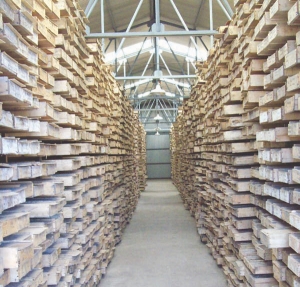Aquiline Resources (AQI-T, AQLNF-O) has released an updated resource estimate for its huge Navidad silver-lead project, in Chubut province, Argentina, that increases contained silver ounces by 40%.
Measured and indicated resources (of which the vast majority are indicated) are now 155 million tonnes grading 127 grams silver per tonne and 0.85% lead, for 632 million oz. silver and 2.9 billion lbs. lead. Inferred resources stand at 46 million tonnes of 81 grams silver and 0.57% lead, for 119 million oz. silver and 580 million lbs. lead. The resources were estimated at a cutoff grade of 50 grams silver equivalent per tonne, using US$10-per-oz. silver and US70¢- per-lb. lead.
(The previous resource estimate, released in 2007, put measured and indicated resources at 453 million oz. silver and 3 billion lbs. lead, and inferred resources at 153 million oz. silver and 546 million lbs. lead.)
Chubut province has banned open-pit mining and cyanide use. While Aquiline can get around the cyanide ban by using flotation alone, the company would like to see the open-pit ban overturned. In a release, Aquiline says it aims to show the Chubut government that Navidad can be developed responsibly and economically.
Located 335 km west of Puerto Madryn, Navidad consists of eight deposits, of which six comprise the 5-6 km-long Navidad trend: Calcite Northwest, Calcite Hill, Navidad Hill, Connector Zone, Galena Hill and Barite Hill. A seventh deposit, Valle Esperanza, is a new discovery that borders Galena Hill. The eighth, Loma de La Plata, is 2.5 km away.
The updated resource estimate, based on 810 drill holes, has two salient features.
The first is the new discovery at Valle Esperanza. Indicated resources here are 12 million tonnes of 172 grams silver and 0.21% lead, for 68 million oz. silver and 56 million lbs. lead. Inferred resources are 11 million tonnes of 123 grams silver and 0.35% lead, for 43 million oz. silver and 84 million lbs. lead.
The second feature is the firming- up of resources at Loma de La Plata, where a large part of the 2007 resource was inferred. The latest estimate puts indicated resources at the deposit at 29 million tonnes grading 169 grams silver and 0.09% lead, for 158 million oz. silver and 58 million lbs. lead. Inferred resources add 3 million oz. silver and 6 million lbs. lead.
The firmer resource lends credibility to a scoping study for Loma, released in October.
The study put startup capital costs at US$273 million for a 10,000-tonne-per-day mine. The mine would produce an average of 15 million oz. silver per year for 6.6 years, for 102 million oz., at an average total cash cost of US$8.61 per oz. silver, including capital costs. These figures yield a pretax net present value of $135.6 million at a 7% discount rate and an internal rate of return of 22%.
Metallurgical tests on material from Loma de La Plata show silver recoveries between 80-85%, and the economic assessment is based on 80% recovery.
In early April, Aquiline released results from metallurgical tests on Valle Esperanza material. Rock grading above 100 grams silver per tonne shows silver recoveries of about 90%, while material grading less than 100 grams silver shows recoveries of 70-80%.
The company has also tested material from Barite Hill, which displayed silver recoveries between 65-85%.
Based on the tests, Aquiline has concluded that the metallurgical response to conventional flotation for Barite Hill and Valle Esperanza material is similar to that of material from Loma de La Plata. Therefore, the company plans to update the scoping study to include material from all three zones.
One difference in Barite and Esperanza material is that it requires greater thickening treatment than Loma material.
The company also plans to revisit previous metallurgical tests on Galena Hill material, where the metallurgy is complicated by the fact that mineralization consists of sulphides associated with pyrite, leading to low silver recoveries in flotation, with losses to tailings. Possible solutions to be tested include fine grinding, pressure oxidation and various reagents. Aquiline also plans to conduct metallurgical tests on material from the other Navidad deposits.
On the news, Aquiline shares added a penny to $2.70. At presstime, the shares were trading at $2.48 in a 12-month range of 72¢- $8.88.
On Dec. 31, Aquiline had working capital of $2 million. Since then, the company has received $675,000 from the exercise of stock options. Aquiline has 68 million shares outstanding.
The company has a convertible debenture outstanding for $17.5 million. Since the conversion price is $12, it looks like the debenture will be converted to a silver stream.


Be the first to comment on "Aquiline Boosts Navidad Resource"